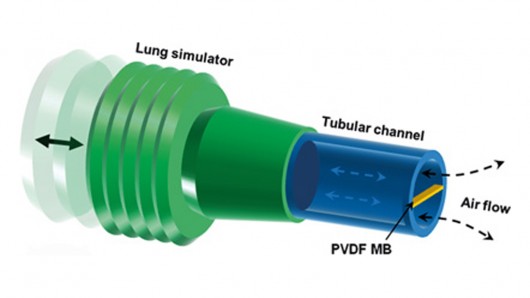
Instead of using traditional batteries as a power source which require to be cut for replacing them with new ones, now there are various recharging technologies such wireless transmission of power from outside the body, biological fuel cells that generate electricity from a person’s blood sugar or piezoelectric to generate electricity from body movements or the beating of their own heart.
This time the researchers have developed a device to generate electricity from patient’s breathing. Based on piezoelectric effect, the device created by scientists from University of Wisconsin-Madison uses low speed airflow like that caused by normal human respiration to cause the vibration of a plastic micro belt engineered from a piezoelectrical material well known as polyvinyliedene fluoride.
As they say, “… we are harvesting mechanical energy from biological systems. The airflow of normal human respiration is typically below about two meters per second.”
Professor Xudong Wang from Materials Science and Engineering at the University of Wisconsin-Madison conduct the team in their effort to improve the quality of the device. “We calculated that if we could make this material thin enough, small vibrations could produce a microwatt of electrical energy that could be useful for sensors or other devices implanted in the face,” said him.
With improvements of the thickness of the material and using the ion-etching process, the device will harvest more energy from the air flow in a person’s nose to assure the power source for implants. Now the device reaches a mili-volt power levels and can reach up to 6 volts at a maximum airflow speed.



